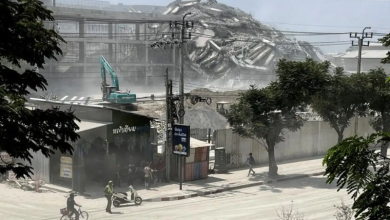Climate change fuels disease spread, prompting community-led measures in Bihar

The repercussions of climate change expand beyond natural concerns, profoundly affecting public health, especially in areas like Bihar, India. In towns such as Sher, where communities catch illnesses like lymphatic filariasis (LF) and other neglected tropical diseases (NTDs), the impacts of climate change are intensely felt. Modified precipitation designs and rising temperatures make favorable conditions for infection vectors like mosquitoes and sandflies to flourish, driving to an expanded frequency of vector-borne maladies.
Research sheds light on how climate change modifies vector biology, favoring the survival and propagation of disease-carrying vectors. Mosquitoes and sandflies discover extended living spaces and populace densities, coming about in an increased chance of disease transmission. This marvel amplifies past already influenced districts, with occurrences of infections like LF and VL rising in regions already unaffected, such as Uttarakhand.
Community Endeavors and Grassroots Mindfulness Campaigns
Within the confrontation of these challenges, community pioneers in towns play significant parts in raising mindfulness around illness avoidance and climate flexibility. They are involved in grassroots activities, teaching villagers on preventative measures such as wearing defensive clothing, utilizing mosquito nets, and dispensing with stagnant water sources. Through community gatherings and door-to-door outreach, they engage inhabitants with the information and devices required to combat vector-borne diseases successfully.
Public Health Reactions and Adjustment Procedures
The criticalness of public health reactions is emphasized to relieve the effect of climate change on disease transmission. Activities such as utilizing mosquito repellents and actualizing fumigation to control vector populaces, are prescribed. Besides, societal-level endeavors, counting community support for fumigation activities, are basic to check the spread of diseases. Applying climate change adjustment methodologies into existing illness control endeavors is necessary to play down wellbeing dangers within the comfort of changing natural conditions.
Collaborative Activity and Tending to Future Challenges
As Bihar braces for hotter summers and decreased precipitation in the coming decades, collaborative activity is significant to address the heightening health dangers postured by climate change. The requirement for collective endeavors should be emphasized to defend community wellbeing. In any case, various challenges lie ahead, counting the need for sustained community engagement, satisfactory healthcare foundation, and inventive approaches to disease control in reaction to advancing climate conditions.
The crossing point of climate change and public health poses critical challenges for communities in Bihar and beyond. The increased frequency of vector-borne diseases outlines the critical need for proactive measures to relieve the effect of climate change on disease elements. Through community engagement, public health reactions and collaborative activity, Bihar can construct strength and adjust to the advancing natural scene, defending the well-being of its inhabitants. As the impacts of climate change proceed to unfurl, concerted endeavors at the neighborhood, national, and worldwide levels are basic to address the multifaceted challenges postured by climate-related health risks.



